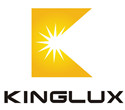For the main problems of LED outdoor lighting, KINGLUX LED glass lens is for everyone to wonder:
1. What are the advantages of borosilicate glass lens than PC lens? PC lens has poor temperature resistance, low light extraction rate (85%), electrostatic surface on the surface, easy to adsorb dust on the surface, lower light transmittance, high temperature of the light source for integrated light source, and will bake the surface of the PC lens, further affecting the penetration. Light rate. The glass lens has high hardness, small thermal expansion coefficient, long service life, and the light extraction rate can be 92%.
2. What is the difference between uniform illumination of LED street light and uniform light distribution? Uniformity of illuminance is that the illuminance values of light at various points on the road surface are similar. The connection of the light spots on the road is relatively uniform through the human eye. However, when the driver drives to see the road surface he is driving, the light pole will be darker. The light at the junction of the two lights is very bright, which seriously affects the driver's line of sight. The uniformity of brightness is similar to the brightness values of various points on the road surface. When the light is on the road, the light is brighter, the light at the junction is darker, and the driver drives to see the road surface he is driving. The brightness is even. For the current street lamp standards issued by the state, the uniformity of brightness is used as an evaluation. For a light distribution with uniform illumination, the index must not meet the national standard.
3. What is the transmittance of borosilicate glass? How to calculate the light transmittance of borosilicate glass? For high borosilicate materials, the higher light output rate is 92%, (where R is the material surface reflection coefficient, which is the refractive index of the material, generally the refractive index of air, generally 1), for high borosilicate material. =1.473, a surface reflection coefficient of 3.65% can be calculated. The average light source passing through the lens needs to pass through the two surfaces of the lens, that is, the reflection loss of the lens is 7.3%. There is also absorption loss in the lens. The thicker the lens, the greater the loss. The loss factor is related to the structure of the lens. Of course, it is also directly related to the design. In summary, the higher light extraction rate is also 92%. Some customers test the light output rate through the remote tester is 96%, which is also the light that reflects the loss of the light source. (The general remote tester is the probe does not move, the lamp rotates 360 degrees, causing the light to run backwards. Also counted), but the light that actually runs backwards is an invalid light that cannot be considered.

|


